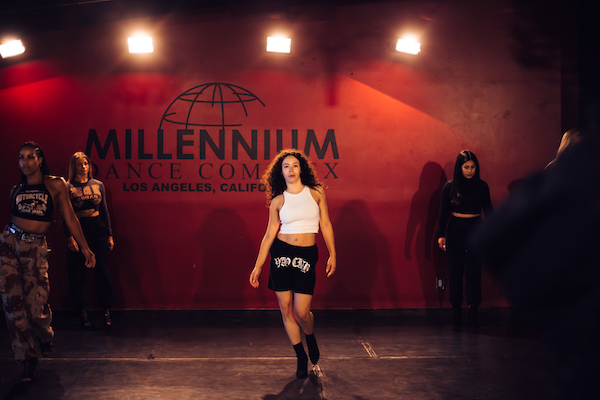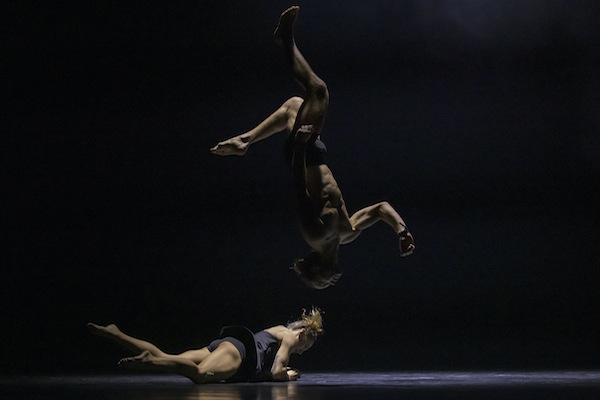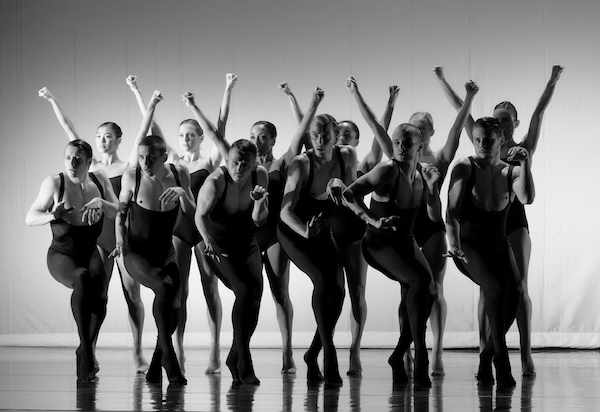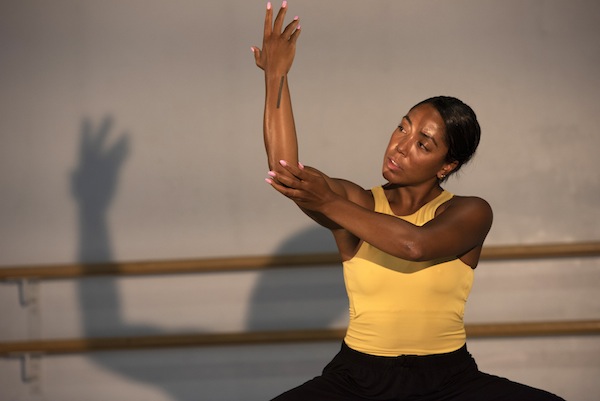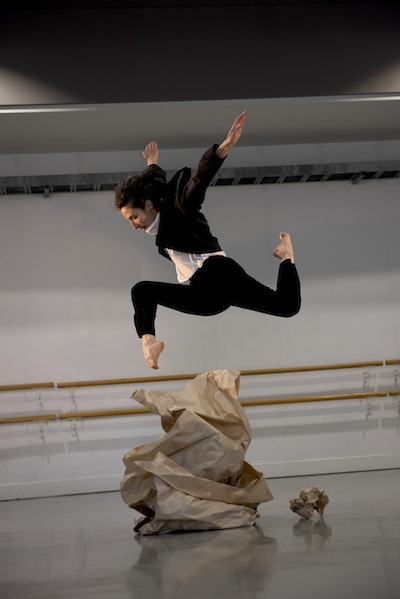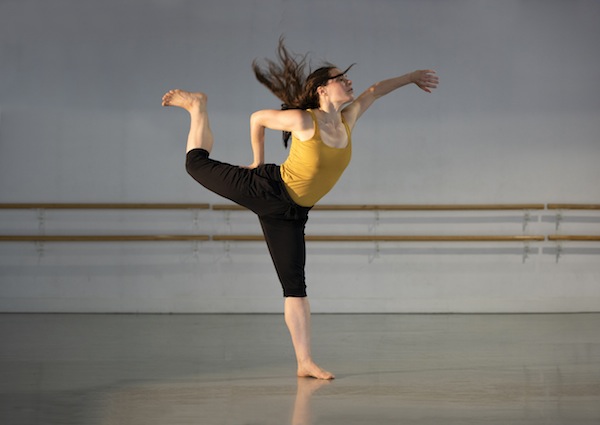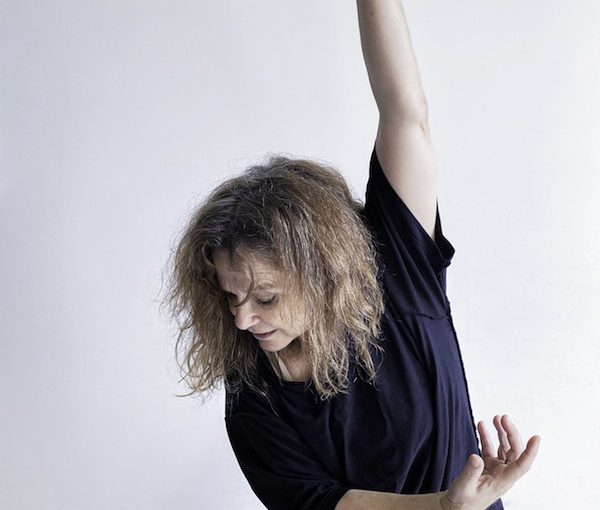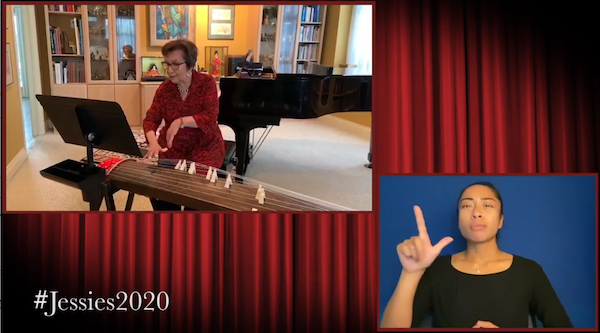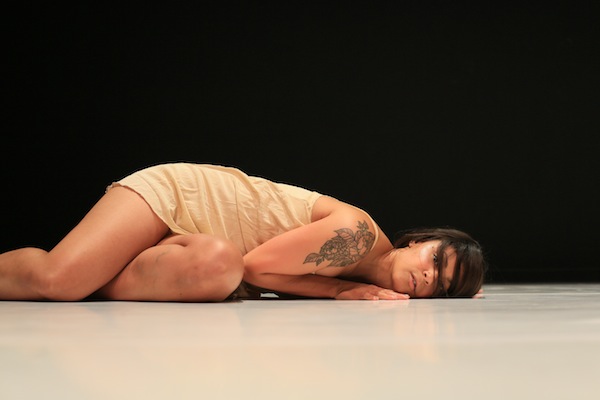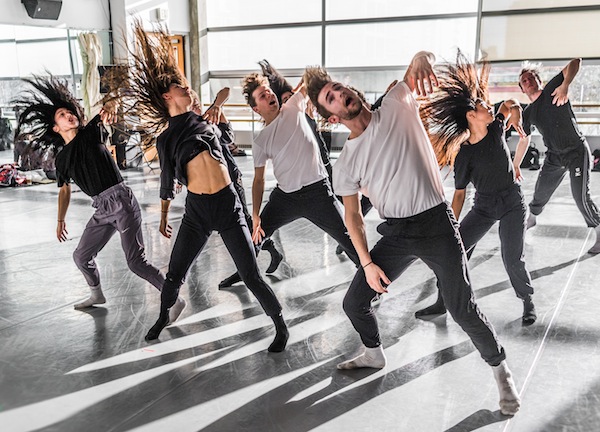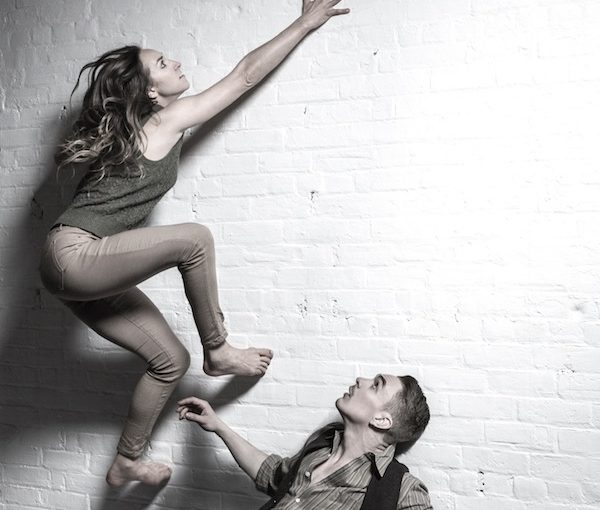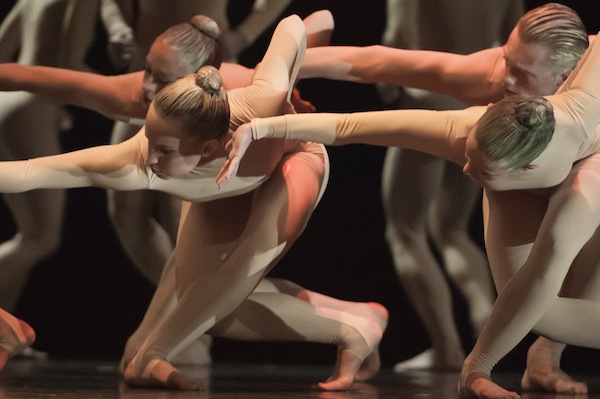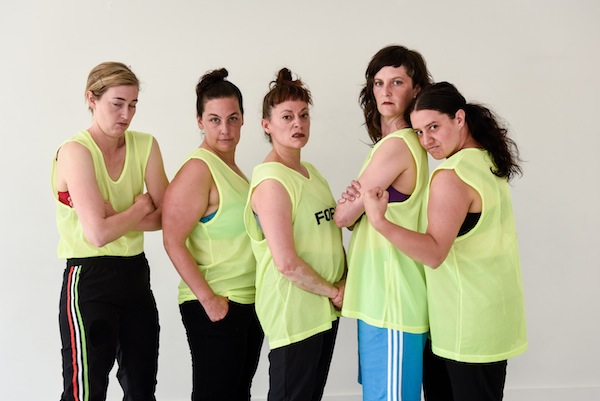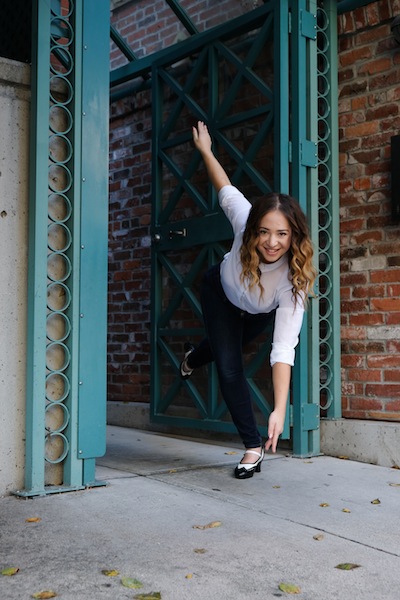Karina Bromberg during Eden Shabtai‘s Elevate Intensive in Los Angeles in August 2022. (photo from Karina Bromberg)
“I think the difference between my dream as a kid and my wanting to do this professionally was getting to experience the behind-the-scenes of what it means to be a professional dancer and choreographer,” Karina Bromberg, 21, told the Independent. “I fell in love with the journey towards the ‘goal’ of being in a movie or on stage and that’s what made me want to keep pursuing this career path.”
Bromberg is the producer and director of the rishon series, which integrates choreography with live music, videography, photography and fashion. The first iteration, rishon.1, was held this past June and rishon.2 will take place at SKL Design+Vision in Burnaby on Oct. 14, at 1:30 p.m.
“Drawing from the knowledge acquired during the creation of rishon.1 and a careful analysis of the final product, my focus for the second instalment has primarily been on elevating the visuals displayed on screen, refining the choreography and creatively designing the performance space,” Bromberg shared with the Independent.
“Given that rishon serves as a platform for emerging and diverse creatives to converge, the cast for rishon.2 is intentionally different, maintaining a commitment to inclusivity and diversity. While the overarching goal and concept remain consistent,” she said, “the skills honed from the first iteration have empowered me to progress and further enrich what rishon offers to both the audience and the dedicated crew involved.”
The idea for rishon came in 2021, when Bromberg and a friend, during a freestyle session, gave each other different objectives to dance.
“I noticed I would analyze and apply the objective to my dance through the senses: How does it look? How would it feel? What smell would it have? Does it make a sharp, or soft sound?” said Bromberg, who is originally from Karmiel, Israel. “It was then that the idea to create something that will somehow involve the five senses formed. Months of pondering the idea led me to realize it needed to evolve into an in-person showcase, which later took the name rishon, meaning ‘first’ in Hebrew.”
Wanting to stage something different, Bromberg searched for venues that would allow audience members to stand amid the artists. “The ultimate goal,” she said, “was to create an immersive and intimate environment where both the audience and the artists were on the same level. Concurrently, I began working closely with TRS, a music artist, and was involved in campaigns for a fashion brand; getting to know artists from different industries, I saw the potential to bring us all together in one space. I expanded on rishon’s creative framework by bringing in the elements of live music, fashion design, modeling and video content of art created for screen.”
Bromberg has been dancing seriously since the age of 5, doing competitive aerobics in Israel, and, at 12, starting “hip-hop, house, popping and dancehall classes at the local dance studio,” she said. “I was dancing competitively at dance competitions like Hip Hop International in Israel and, upon immigrating to Canada, I stopped for about a year. It took me and my parents some time to understand how things work here and to find a studio we could afford and I could easily commute to alone. So, in the meantime, I learned routines off YouTube and danced in my living room.”
Bromberg was 14 when her family moved to Vancouver, and she admits to having been “resistant and closed-minded about the move … but my parents strived and worked hard to open up more doors and provide a better future for me and my younger brother.
“The story of why Vancouver is pretty funny,” she added. “My mom liked to go on Google Earth and see different neighbourhoods and, when she saw the Science World ball, she decided we were going to Vancouver. It was pretty, and less cold than the rest of Canada – which, coming from Israel, was important to us!”
Bromberg’s resumé now includes dancing in Netflix, Paramount+ and CW productions.
“In 2019,” she said, “there was a big audition for Christmas Chronicles 2, choreographed by Chris Scott. Unrepresented by a dance agency, I attended the audition and made it to the last round. I remember having a lot of fun, but I didn’t set my expectations too high. Two months later, while visiting my family in Israel, I received an email confirming that I had booked the job. It was such a proud and surreal moment. Being my first job, I absorbed a wealth of knowledge and remain thankful for the opportunity extended to me.
“The onset of COVID-19 resulted in a work hiatus until 2021, when I was directly booked for a short dance scene in Honey Girls. Being unrepresented at the time, I diligently pursued and submitted self-tapes to anything I could find. In the same year, I booked Monster High, my biggest commercial job to date. It was three months in length, and one of the best times of my life. I was invited back to dance in Monster High 2 in the beginning of 2023 and, following this gig, I was able to get represented by a local dance agency. I recently wrapped up filming for Riverdale Season 7, Episode 14, marking another milestone in my journey.”
Bromberg said she has always loved performing and would help choreograph end-of-the-year shows in her elementary school back in Israel. “I’ve just always had a pull to perform and dance and move my body,” she said. “I’ve always dreamed of being on the big stages or in music videos ever since I was allowed to watch MTV, but I think the dream became something more solid and realistic in my mind in 2021 when I was visiting LA to perform at a showcase. I have been training with a company based in LA since May 2020, four to five times a week over Zoom in my room or garage. The opportunity to work with the choreographer in person and to be in the room with people I look up to, I remember feeling so in my purpose and starting to believe even more that this is what I am supposed to be doing.”
Falling in love with the journey towards her goal includes a commitment to creating. She has videos on her website of solo dances that she has choreographed.
“I wanted to practise dancing for the camera, as well as start investing in my own ideas,” she said. “I often have a vision for visual art that can be made when I listen to songs, and I enjoy directing these videos and filming them, so I made a promise to myself to go through with every idea that doesn’t leave my mind and I have the itch to create.”
Several of the videos feature the music of Baby Keem.
“The production on the songs and Baby Keem’s delivery have stuck out to me since the first time I heard him, and the pull to choreograph and create to his music has been unstoppable since,” she explained. “I recently watched an interview with him, where he talks about constantly living in his art and taking inspiration from anything he does … and I feel very much the same. I go to concerts and watch for the creative direction, the choreography, the show flow, or I will put on a movie or a TV show and look at angles it was shot from and the editing. I am constantly playing music no matter what it is I’m doing and I often hit the ‘go to radio’ feature on Spotify to discover new artists and genres to continue the creative flow and keep an open mind. The inspiration comes from everything I do, consume and engage with.”
In this context, it is easier to see how Bromberg conceived and mounted the multifaceted rishon.
“From a technical standpoint, bringing rishon.1 to fruition in June required extensive research, numerous emails, location scouting, securing funds and making quick adjustments,” she said. “It was a significant learning experience for me, considering I had never organized an event before…. Building a team was crucial to me, and each member brought unique and specialized knowledge, contributing to the success of the show.
“Reflecting on the process, I almost forget the hard and consistent efforts, along with the many no’s I encountered while seeking funding and assembling my team,” she said. “Looking back, the overwhelming feeling is how right everything felt…. Creatively, outlining the show came naturally. I knew I wanted the soundtrack to be one album, and the ideas just flew to me. I went with my first thought, leaving no room for second-guessing. Whenever anxiety or ‘imposter syndrome’ crept in, I looked back at the progress I’d made, refocused on the work, and found it dissipating.”
For more about Bromberg, visit karinabromberg.com. For tickets to rishon.2, go to eventbrite.com.

